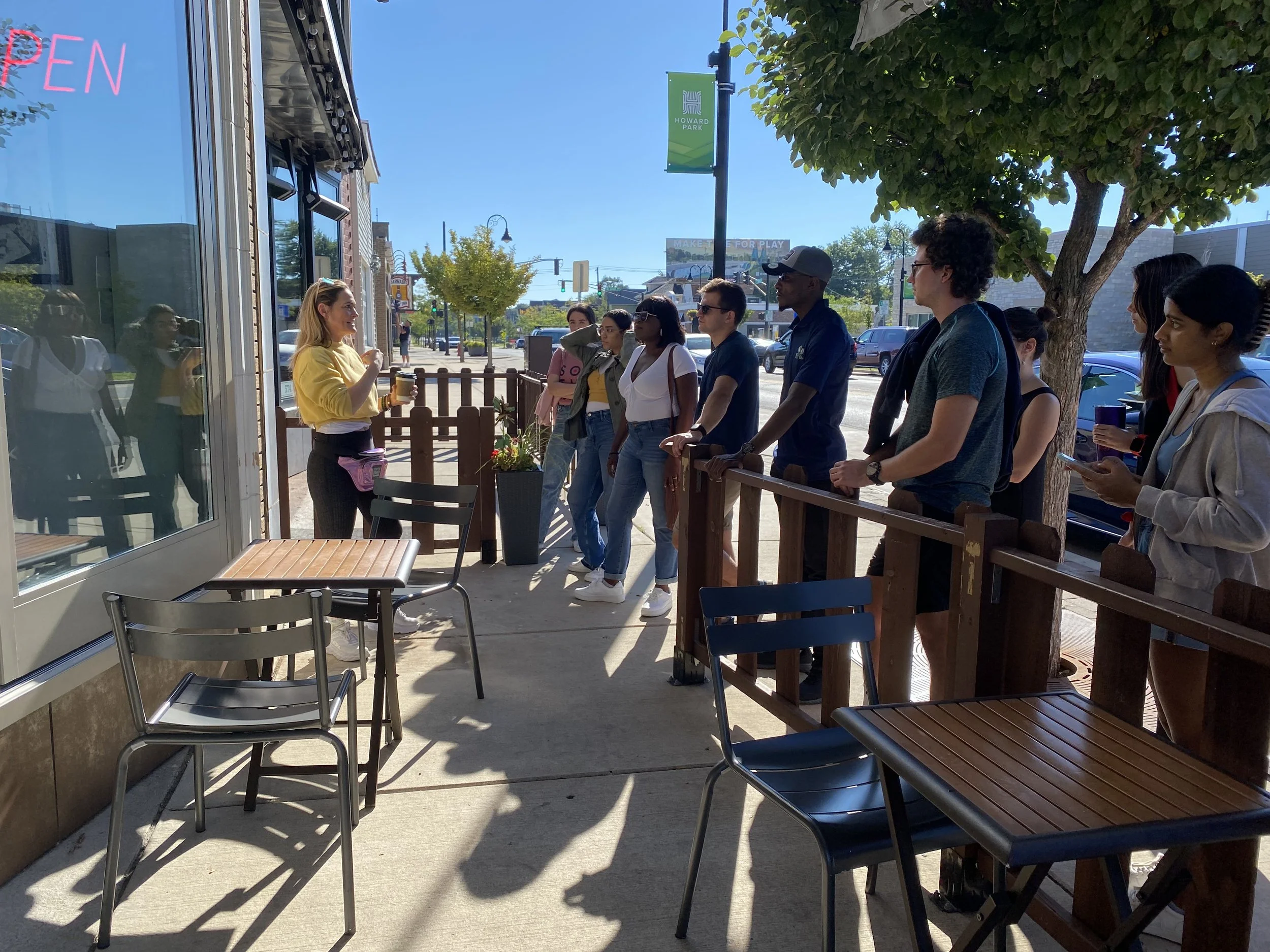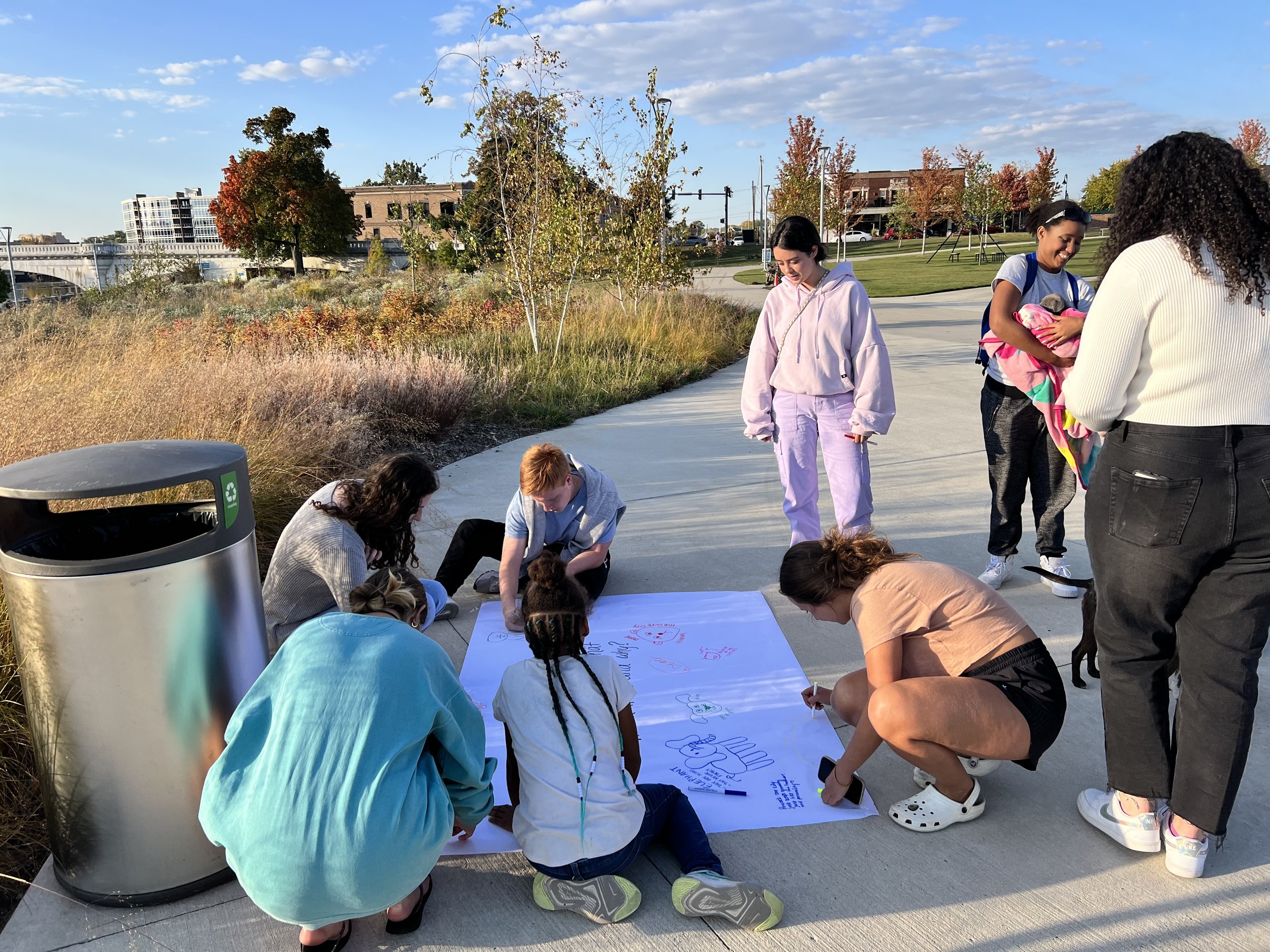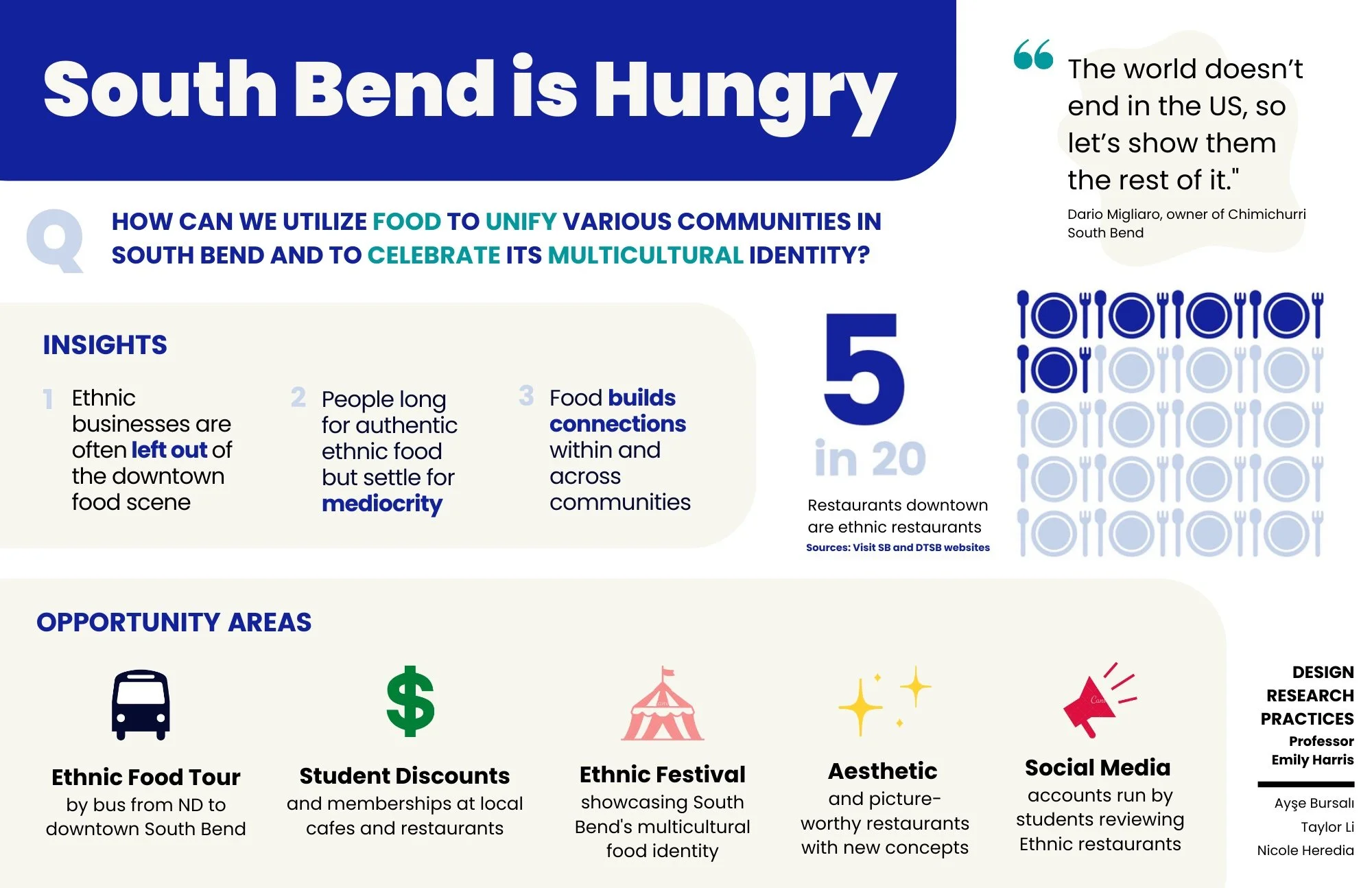Teaching Sample
Design Research
Course Overview
Students were challenged to be design researchers in the heart of downtown South Bend. We partnered with the nonprofit Downtown South Bend and asked the question “How can downtown South Bend become a destination city that is liveable, loveable, and walkable?”
Students were to define a specific research question and gain a deeper understanding of the current needs, desires, behaviors, and aspirations of a target demographic. The course was divided into 3 phases; Understand, Explore, Envision the Future. Students presented key findings to create a compelling visual narrative communicating insights and opportunities for potential products, services, and/or systems that would help DTSB reach their goals.
Phase 1: Understand
Students began their ethnographic research by taking a walking tour of downtown South Bend to better understand its history, dynamics, values and stakeholders. During phase 1 we learned the difference between quantitative and qualitative research approaches and discussed the numerous, available research tools. We explored secondary research including market research to begin our understanding of the chosen research question. Teams used this introductory information to create preliminary user personas, journey maps, and scenarios. Phase 1 concludes with a compelling visual presentation that thoughtfully communicates what they learned and what they hoped to learn through their upcoming research.
Phase 2: Explore
Understanding Behaviors to Uncover Needs, Aspirations, and Opportunities
Based on their phase 1 question and findings students began writing their ethnographic interview questions and preparing to conduct their research plan.
Students had 2 class periods to conduct their ethnographic research to understand the perceptions, emotions, drivers, and needs of the target demographic and key factors surrounding the research question.
Finally, student teams will create a high-level report detailing their process, findings, and refined research question, personas, scenarios and journey maps.
Phase 3: Envision the Future
Students moved from understand and explore to ideation and insights. They conducted ideation activities to help propose possible solutions to their research questions. They created compelling visual narratives to communicate their insights and potential products, services, and/or systems, making explicit connections to the needs, values, and principles identified in phases 1 and 2. They also made recommendations on who should be a stakeholder in the project if it were to advance to the next phase.












